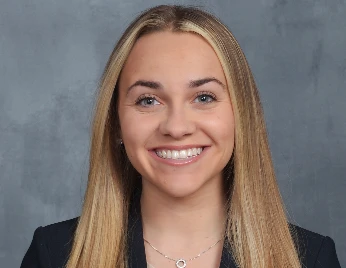1050 - Salvage Thoracic Reirradiation for Recurrent Non-Small Cell Lung Cancer: Clinical Efficacy and the Impact of Consolidative Immunotherapy
Presenter(s)

J. R. Rocchetti1, N. Yegya-Raman2, M. Iocolano2, W. P. Levin2, K. A. Cengel2, J. D. Bradley3, S. J. Feigenberg2, and C. Friedes2; 1Rowan-Virtua School of Osteopathic Medicine, Stratford, NJ, 2Department of Radiation Oncology, Perelman School of Medicine, University of Pennsylvania, Philadelphia, PA, 3University of Pennsylvania/Abramson Cancer Center, Philadelphia, PA
Purpose/Objective(s): To describe the clinical and oncologic outcomes in a large cohort of patients treated with salvage thoracic reirradiation (reRT) for isolated locoregional recurrence of non-small cell lung cancer (NSCLC).
Materials/Methods: Between January 2011-December 2021 we identified 1219 patients treated with definitive, conventionally fractionated thoracic radiotherapy for stage II-III NSCLC at a single institution. This included 130 patients treated with definitive salvage reRT. ReRT was administered to a prescription dose of 60-72 Gy in 1.8-2.0 Gy fractions. Primary outcomes were overall survival (OS), progression-free survival (PFS), and the toxicity of reRT; secondary outcomes were locoregional failure (LRF) and distant failure (DF), calculated with the Kaplan-Meier method and cumulative incidence with death as a competing risk. Associations between variables and event outcomes were modeled with Cox proportional hazards. Toxicity outcomes included any grade 3+ non-hematologic event, any hospitalization within 90 days of the start of reRT, and any grade 5 toxicity per Common Terminology Criteria for Adverse Events, version 5.0.
Results:
Median OS and PFS for the entire cohort were 17.4 months (95% CI 14.1-22.9) and 8.1 months (95% CI 6.7-10.8), respectively. 2-year OS was 37.8% (95% CI 30.3-47.2%), and 3-year OS was 25.9% (95% CI 19.3-34.8%). The 3-year cumulative incidence of DF and LRF were 44% and 46%, respectively. Patients who received consolidative immunotherapy after reRT had improved median OS (27.8 months [95%CI 18.4-not reached] vs 15.8 months [95%CI 12.1-22.1]; p=0.035) and locoregional-free survival (22.8 months [95%CI 9.8-not reached] vs 8.8 months [95%CI 7.6-12.6]; p=0.009). In multivariable modeling, receipt of consolidative immunotherapy (HR 0.56, 95%CI 0.32-1.03, p=0.065) and being hospitalized within 90 days of the start of reRT (HR 2.03, 95%CI 1.24-3.33, p=0.005) were associated with OS. Overall, 26.7% of the cohort experienced grade 3 or higher non-hematologic toxicities, and 9 patients (6.9%) experienced grade 5 toxicities.Conclusion: Thoracic reRT is a safe treatment option associated with long-term cure in select patients. Immunotherapy consolidation was associated with improved clinical outcomes.
